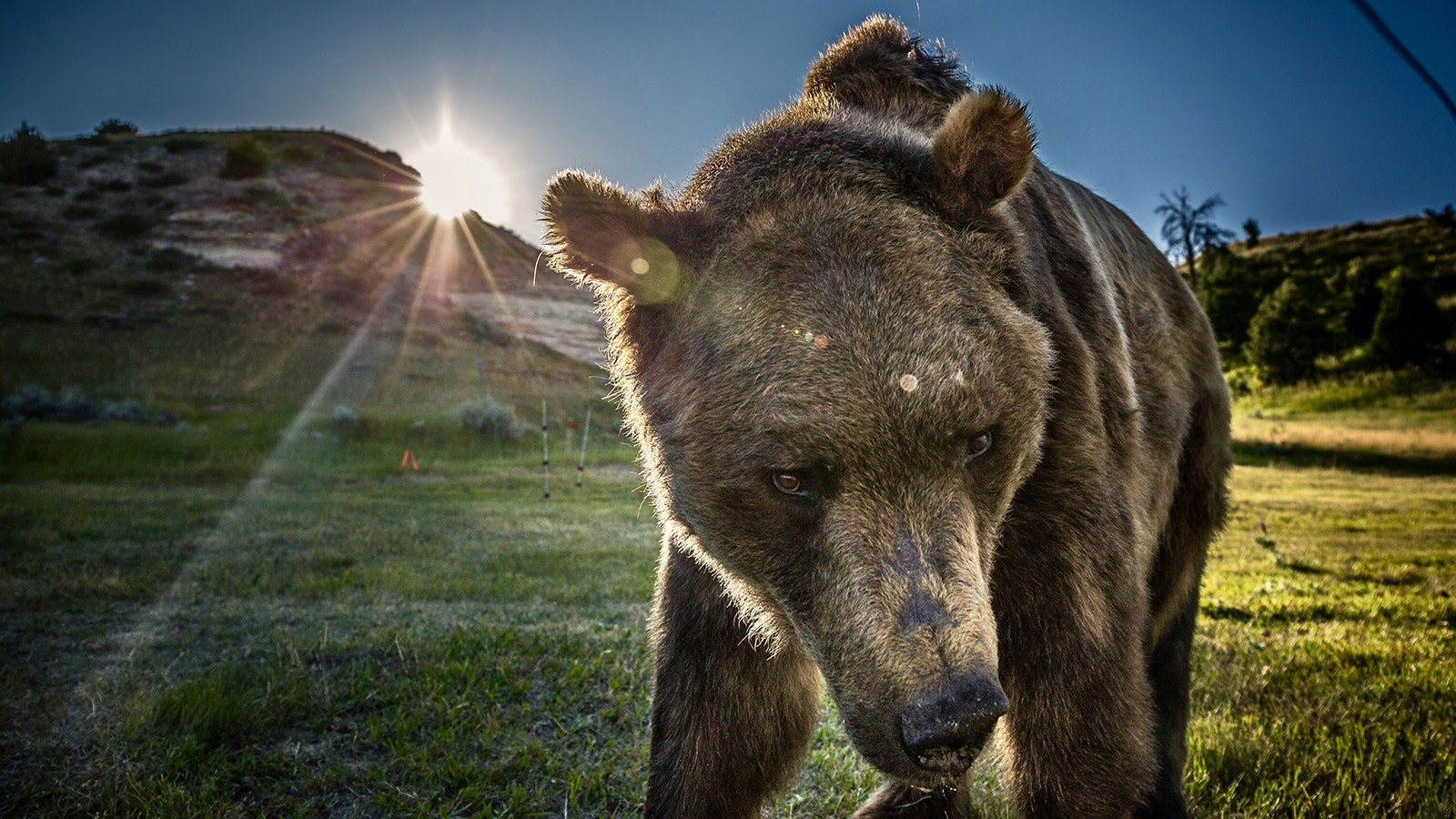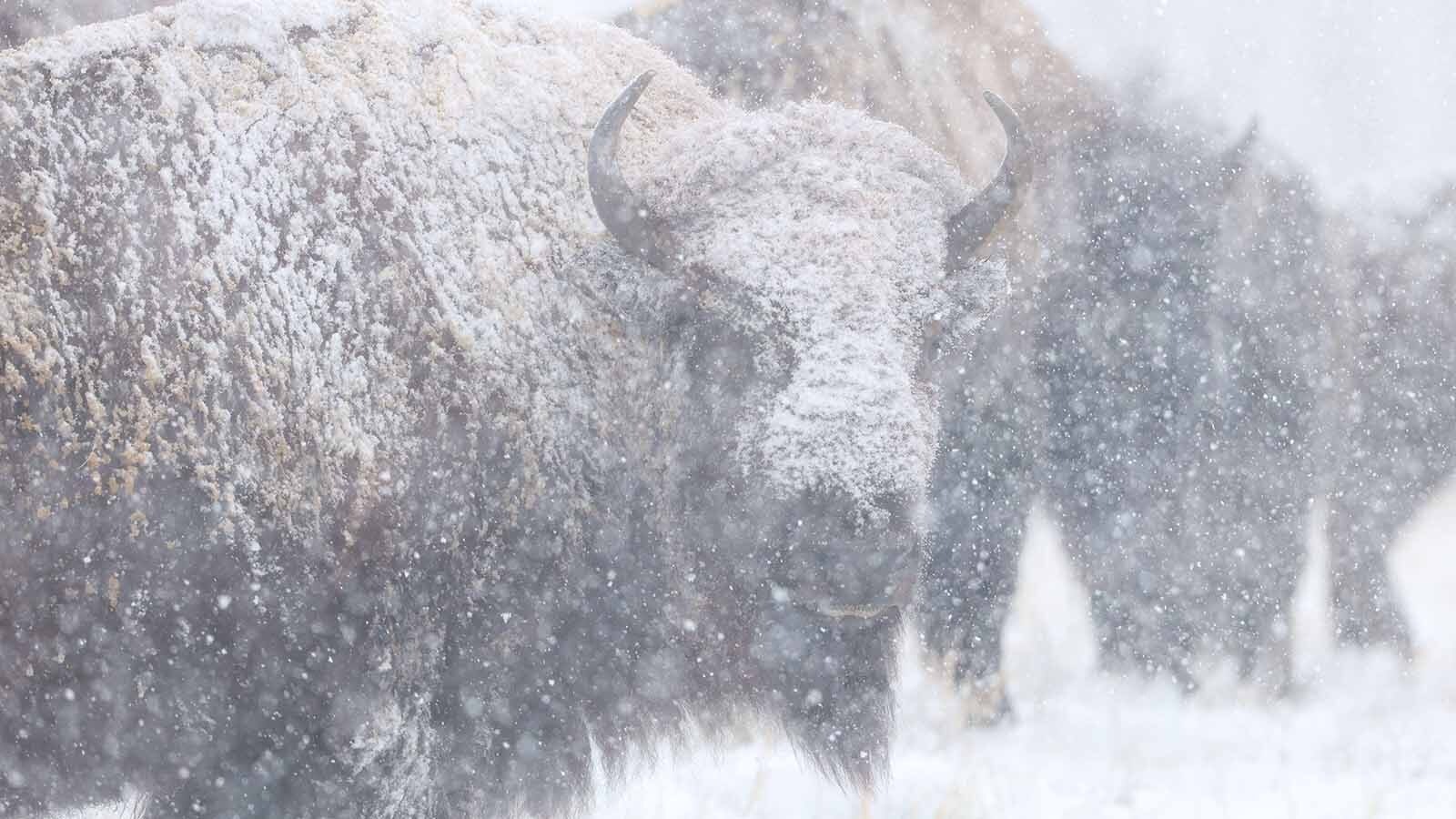Alex Maher of Jackson loves bow hunting for elk the rugged wilderness of Teton County, but he has to be on the lookout for grizzly bears.
He told Cowboy State Daily that a two-day grizzly bear survival course — called “Survive the Grizz” — offered by former Navy SEAL Chris Forrest of Bozeman, Montana, helped give him peace of mind.
“With the training that Chris offered, I feel much better prepared going into bear county,” he said.
Forrest said his course incorporates the same principle of “forging,” or practicing under stress, that applies to Navy SEAL military training.
“When my students go into grizzly county, they can tell themselves, ‘I’ve been here before. I’m forged. I’m prepared,’” he told Cowboy State Daily.
Adam The Bear Used To Help
Until recently, the course involved getting up close and personal with Adam, an 850-pound grizzly bear that was trained for movies, Forrest said.
“I wanted my students to see what 850 pounds of bear looks like. That was the thrilling part of the class, because we were all right there with a grizzly bear,” he said.
While students didn’t engage in mock fights with Adam, spending some time close to the bear helped instill them with a sense of awe and respect, Forrest said.
Unfortunately, Adam’s handler lost his license for keeping the bear, so the hulking grizzly can no longer spice up the local grizzly survival training classes.
Forrest has to use other means to get the adrenaline pumping, such as fast-moving targets, that come at students doing 25 mph, simulating a charging grizzly.
“It produces a lot of adrenaline, so you’re having to work through the fumbles to use your bear spray or handgun,” he said.

Bow Hunters Asked For Help
Forrest served three deployments with SEAL Team 1 in the late 1990s. He’s lived in Bozeman for 22 years and has offered tactical training through a company he founded with his wife.
“About eight years ago, I had some bowhunters come and ask me, ‘Can you teach us a course about grizzly bears for hunting in bear country?’” he said.
His clientele has since expanded. It now includes many people who were inspired to leave urban areas and buy land in Montana by the hit television series “Yellowstone.”
Many of those folks have never been anywhere near a bear, or handled bear spray or firearms, he said.
Bear Knowledge
Having earned a degree in wildlife biology from Montana State University, Forrest had a head start when he decided to launch “Survive the Griz.” He also consulted with several bear biologists and wildlife agents he knows to get a comprehensive knowledge base.
He includes information about black bears in his course. When it comes to humans being mauled, the two species are quite literally different animals, he said.
“With a black bear, you fight. And with a grizzly bear you submit,” he said. “The reason being, grizzlies are an apex predator, so they’re not naturally afraid of anything. If they do attack, it’s not always to kill, it’s to put (down) the threat to their cubs or their food down – to stop the threat.”
Black bears are generally timid and maul people far less frequently, he said. But when they do it’s more likely they’re actually trying to kill a person.
“Generally, if a black bear is attacking a person, it’s because the bear is diseased, starving or injured,” Forrest said.
Stop It Before It Starts
The best option, of course, is to avoid a run-in with a bear in the first place. And then being prepared to stop a bear charge if one does happen, he said.
That’s why the first day of the course includes information about being “bear aware” in grizzly country, he said. That includes such things as how to avoid surprise close-range encounters with bears, respecting their territory and how to watch for signs that a grizzly is nearby.
The first day also includes training in “non-lethal” bear defense tools, such as bear spray. The second day is focused on training with firearms.
For both bear spray and firearm training, Forrest uses a fast-moving two-dimensional bear target mounted on rails.
It does more than train students on marksmanship with bear spray or bullets, he said. It also gives them an accurate experience of just how quickly a bear charge can unfold, teaching them how fast they’ll need to be with their spray or firearm.
‘Robo Bears’ Are OK
Forrest said he sees value in the ‘Robo-Bear’ training devices used by the Wyoming Game and Fish Department and the Montana Department of Fish, Wildlife and Parks.
Those are plastic bears mounted on remote-control rolling bases that allow people to test their skill with bear spray.
Forrest said he still prefers using his rail-mounted target because Robo-Bears aren’t quite fast enough for his tastes.
Bear Spray And Guns
As to the never-ending debate over whether bear spray or guns are better for bear defense, Forrest said he encourages people to carry both. He added that they must train regularly with both, because if they ever have to use either one, it will be in a situation that unfolds in a matter of seconds under extreme stress.
“We had a saying in the SEALs: ‘Two is one, and one is none,’” Forrest said.
What that means is, if you have only one defensive tool with you in the field and it fails, then you’re left with nothing, he said.
He added that bear spray is great, but wind can render it ineffective.
He said he knows of one case in which a man tried using bear spray to stop a charging grizzly, but the wind blew it off course so he ended up having to use his handgun.
“If he hadn’t have had that handgun in addition to his bear spray, he could have been killed,” Forrest said.
More Encounters Expected
Forrest said he hopes his course leaves people feeling prepared for bears. He wants people to have a healthy respect for grizzlies, but not an irrational fear that keeps them from going into wild country.
“I tell people that recreating in bear country is like swimming in Hawaii,” he said. “You have to know when there’s bears around, and you have to know when there’s sharks around. But I don’t want to not swim in Hawaii, and I don’t want to not recreate in bear country.”
People must be aware, prepared and let grizzlies know that they aren’t easy targets, Forrest added.
“Sometimes, I’ll go hiking where there have been bear attacks, and I’ll see college kids hiking with no bear spray or any other means of deterrence,” he said. “There’s going to be more lethal bear encounters. The bears need to learn to fear humans again.”
Mark Heinz can be reached at mark@cowboystatedaily.com.





